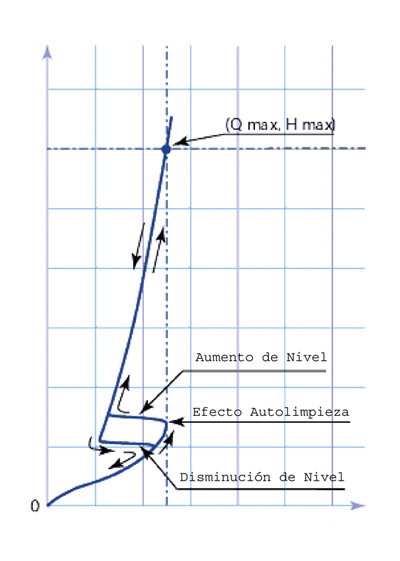 Vortex flow regulators are designed to regulate little flows with big cross section, minimizing the risk of blockage. As they don’t have moving parts, and don’t need external power, they are easy to maintain. Made of AISI 316 Stainless Steel, their durability is granted in every kind of operation conditions.
Vortex flow regulators are designed to regulate little flows with big cross section, minimizing the risk of blockage. As they don’t have moving parts, and don’t need external power, they are easy to maintain. Made of AISI 316 Stainless Steel, their durability is granted in every kind of operation conditions.
Flow curve.: The flow across vortex flow regulators depends on the water height. During dry time, all the flow easily passes across the flow regulator. If the height of water rises during a storm event, for example, the air is trapped inside the regulator chamber, and a whirlwind is crated. In this moment, the flow curve becomes parabolic, and the flow is reduced. The potential energy of the water is lost due to the rotation movement. Cross section is reduced because the air nucleus, and thus discharge is limited. When the inlet flow in the storm tank decreases, the water height is reduced, and the flow curve is still parabolic until air enters the flow regulator. This air destroys the vortex, and creates a sudden increment of discharge flow, which allows cleaning affect upstream.
According to their installation conditions we can distinguish the following:
- Dry chamber installation:

- Semi-dry chamber installation:

- Wet chamber installation:

We have different models for each kind of installation conditions, depending on the flow and height of water. During installation, some instructions must be followed, to guarantee the optimal service of the flow regulator, and make easy the maintenance operations when needed.
 Válvulas Vortex
Válvulas Vortex